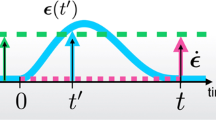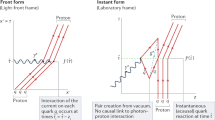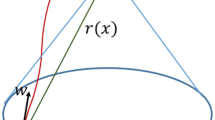Abstract
IN view of the difficulties encountered in the quantum theory of fields, we have developed a new approach to this subject which bears a much closer resemblance to ordinary quantum mechanics of particles than the existing theories (Heisenberg and Pauli), We consider the field in a finite volume Ω as a mechanical system described by its total energy and momentum. The latter are obtained from the classical expressions for the energy-momentum densities simply by multiplication with Ω. Each field component is considered as an operator (for the whole volume Ω) and is not regarded as a function of the co-ordinates at all. Between the field components we have established very simple commutation laws, analogous to the ordinary law pq—qp = ℏ/i which depend on the transformation character of the field considered. For example, for the scalar meson field (potential v, its gradient f, its time derivative g; * means Hermitean adjoint; [a,b] means ab – ba):
This is a preview of subscription content, access via your institution
Access options
Subscribe to this journal
Receive 51 print issues and online access
$199.00 per year
only $3.90 per issue
Buy this article
- Purchase on Springer Link
- Instant access to full article PDF
Prices may be subject to local taxes which are calculated during checkout
Similar content being viewed by others
References
Proc. Roy. Soc. Edinburgh (in the press).
Author information
Authors and Affiliations
Rights and permissions
About this article
Cite this article
BORN, M., PENG, H. Statistical Mechanics of Fields and the 'Apeiron'. Nature 153, 164–165 (1944). https://doi.org/10.1038/153164a0
Issue Date:
DOI: https://doi.org/10.1038/153164a0
This article is cited by
-
Self-organised localisation
Journal of High Energy Physics (2021)
Comments
By submitting a comment you agree to abide by our Terms and Community Guidelines. If you find something abusive or that does not comply with our terms or guidelines please flag it as inappropriate.



